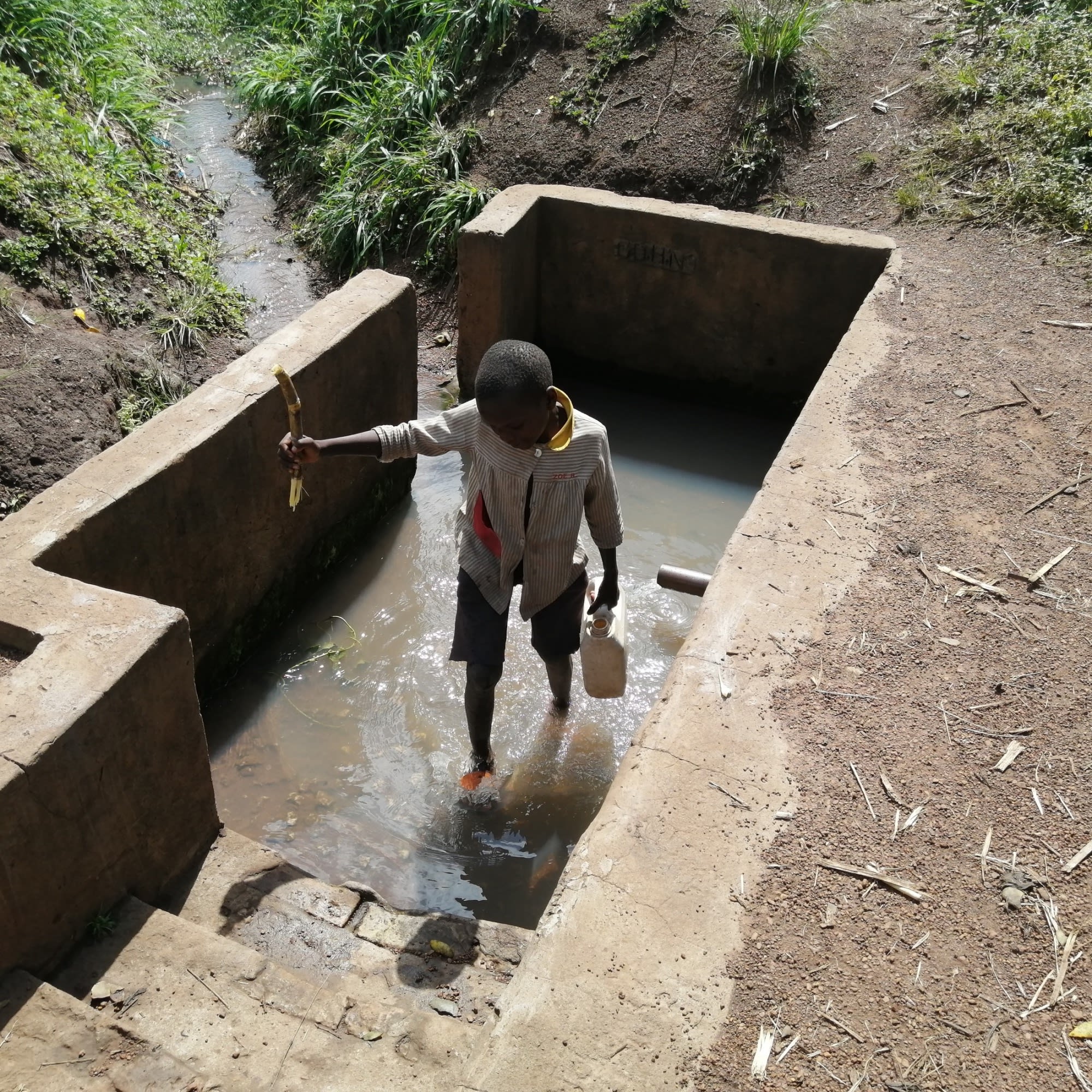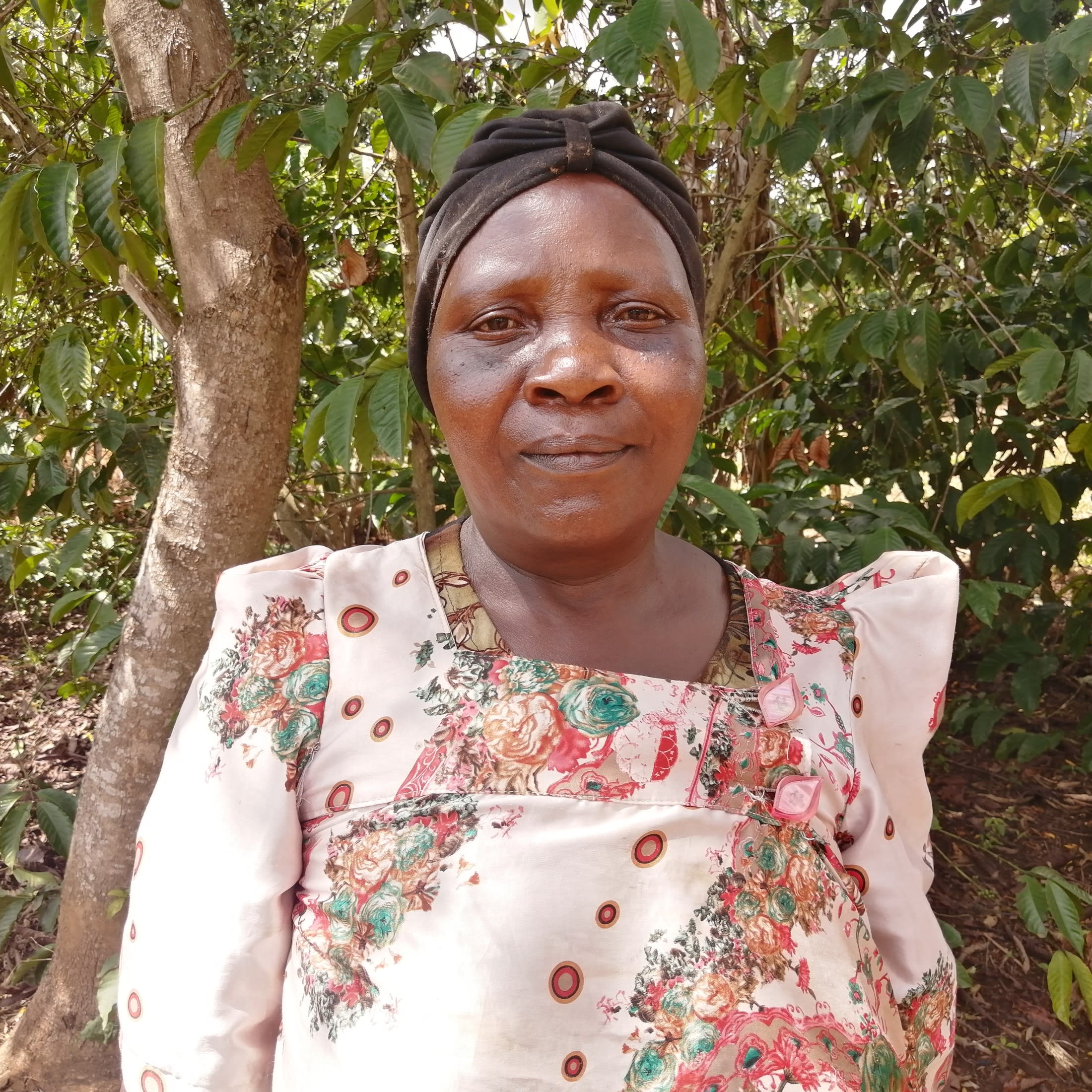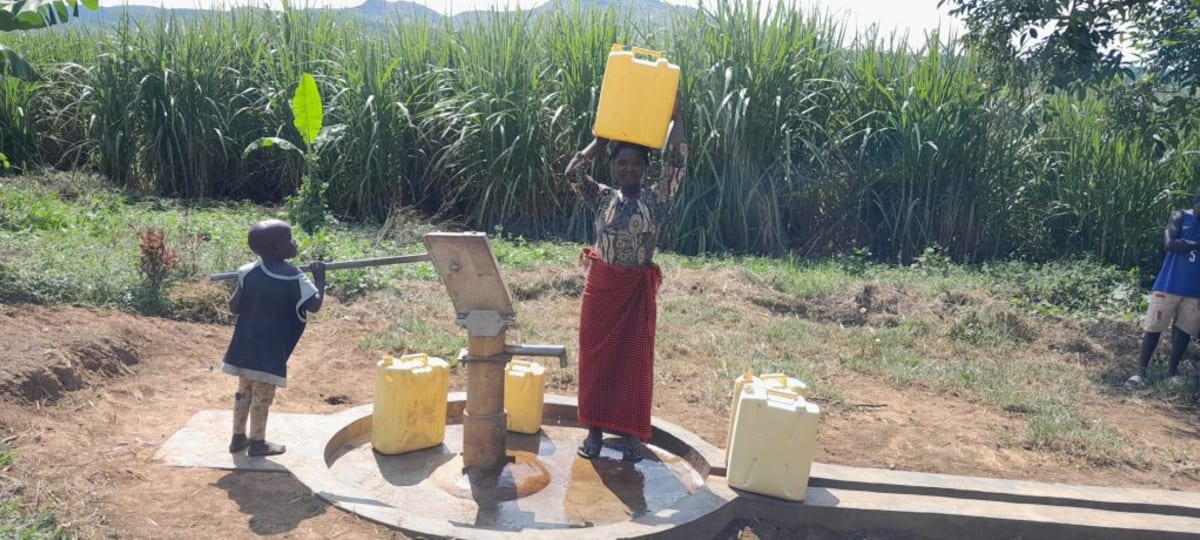Finding clean and sufficient water is an overwhelming challenge for the 225 community members that live in Kisoga, Uganda.
Their only source of water is a protected spring shared by multiple communities. But if the spring was protected properly at one point, it most certainly isn't anymore.
The spring box, whose layers filter the water before it reaches the discharge pipe, is not fenced, which means those layers have most likely been compacted. The spring also lacks proper drainage, which means if water fetchers have any open sores or cuts on their feet, standing in the dirty water risks diseases and parasites. Neither the construction nor the water meet our standards.
But for the people of Kisoga, who don't know their protected spring is compromised, the most troubling thing about their local water crisis is all the wasted time waiting in long lines.
"I collect water from the protected spring locally known as Kabagarama in Kisoga Village," said 11-year-old Treva (shown below collecting water).

"The water point is always overcrowded, and people always fight for water. Jerrycans end up breaking as people try to push others from the line," Treva said.
Because acquiring water takes Kisoga's people such a long time, people get less of it. Without water to do essential daily tasks, people's normal routines are disrupted, and important things like working and going to school are challenging. For instance, Treva recalled a day he went to school with a dirty uniform because he had no water to clean it and he was punished by his teacher.
"We have water scarcity in our village," said Olivia Nyamaizi, a 49-year-old housewife in the photo below. "I stay near a swamp, but cannot use that water for any domestic activities since it is smelling bad because it is a dumping place for wastes from a local brewery." Olivia only uses the swamp water for feeding her animals.

"I get water from Kisoga Center, where I get safe water from the protected spring," said Olivia.
The "protected" spring is about two kilometers (1.24 miles) away from Olivia's house. This is a difficult journey, especially when she must carry a full jerrycan on her head, and it always leaves her exhausted. The spring is always overcrowded, especially in the evening when she collects water, causing delays that make Olivia late preparing the evening meal and unable to bathe her children before they need to go to bed.
Olivia and Treva, along with the other community members in Kisoga, need their own safe, close waterpoint that will allow them the time and energy to accomplish their daily tasks.
Here’s what we’re going to do about it:
New Borehole
This new borehole is an exciting opportunity for this community! We work with the community to determine the best possible sites for this well.
We conducted a hydrogeological survey and the results indicated the water table is an ideal candidate for a borehole well. Due to a borehole well's unique ability to tap into a safe, year-round water column, it will be poised to serve all of the water needs for this community, even through the dry months.
Community members will help collect the needed construction materials such as sand, rocks, and water for mixing cement. They will also provide housing and meals for the work team, in addition to providing local laborers. We will complement their materials by providing an expert team of artisans and drilling professionals, tools, hardware, and the hand-pump. Once finished, water from the well will then be used by community members for drinking, handwashing, cooking, cleaning, and much more.
Training
Training’s main objectives are the use of latrines and observing proper hygiene practices since these goals are inherently connected to the provision of clean water. Open defecation, water storage in unclean containers and the absence of hand-washing are all possible contaminants of a household water supply. Each participating village must achieve Open Defecation Free status (defined by one latrine per household) prior to the pump installation for this borehole well.
This social program includes the assignment of one Community Development Officer (CDO) to each village. The CDO encourages each household to build an ideal homestead that includes: a latrine, a handwashing facility, a separate structure for animals, a rubbish pit and a drying rack for dishes.
We also implement the Community-Led Total Sanitation (CLTS) approach with each of our village partners. This aims to improve the sanitation and hygiene practices and behaviors of a village. During these sessions, village leaders naturally emerge and push the community to realize that the current practices of individual households – particularly the practice of open defecation – are not only unhealthy, but affect the entire village. CLTS facilitates a process in which community members realize the negative consequences of their current water, sanitation and hygiene behaviors and are inspired to take action. Group interactions are frequent motivators for individual households to build latrines, use them, and demand that other households do the same.
Improved Sanitation
The aim is that all households own an improved latrine. Many households do not use a latrine but use the bush. Due to open defecation, feces are spread all over the village. This leads to waterborne diseases and contamination of groundwater and surface water. Our aim is that the community is able to live a healthy life free of preventable diseases. We endeavor that at the end of our presence in the community, people will have both access to sustainable, clean water and access to sanitation. We have now organized families to form digging groups for latrine construction, and empowered them with tools to use.

 Borehole Well and Hand Pump
Borehole Well and Hand Pump
 Rehabilitation Project
Rehabilitation Project



























